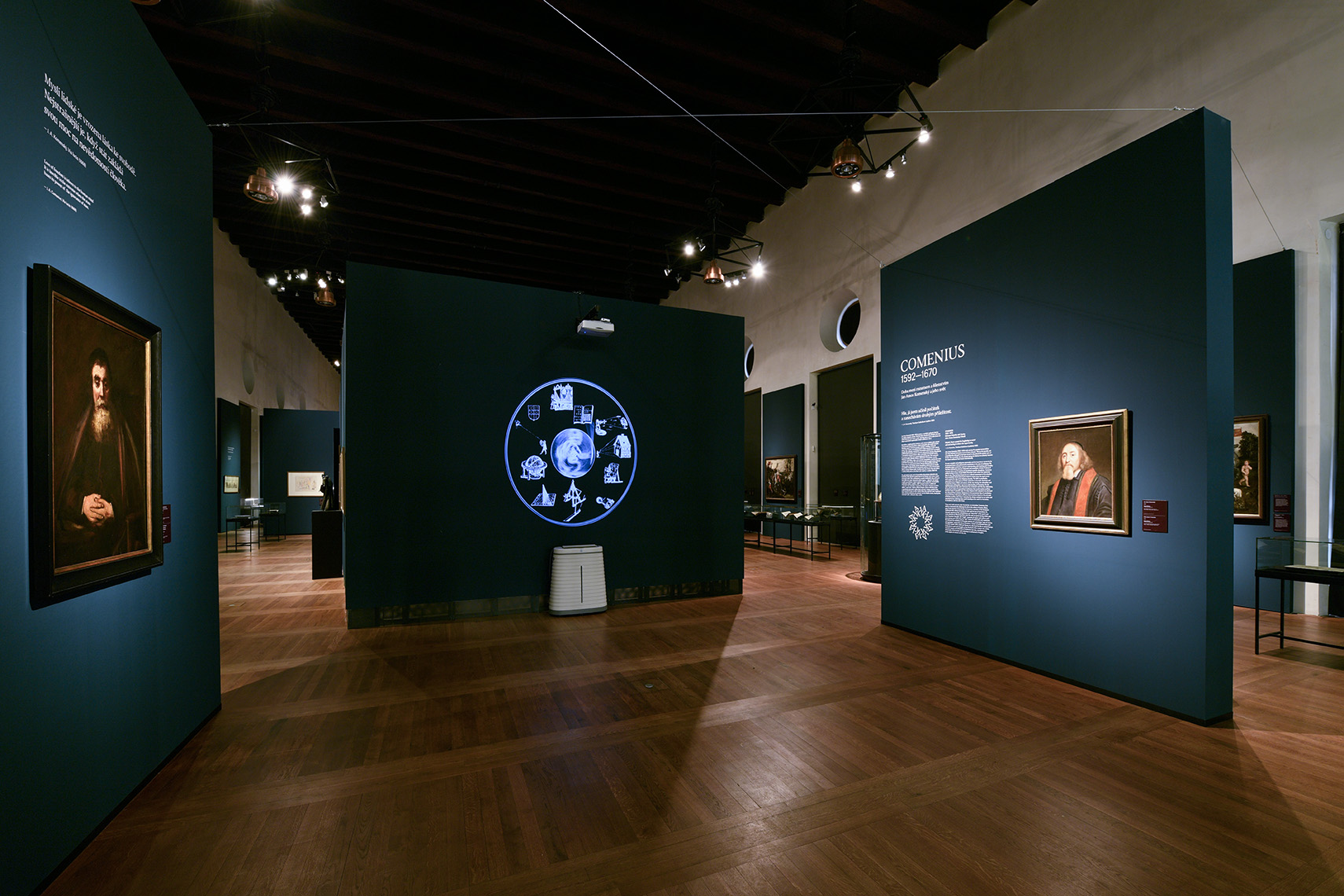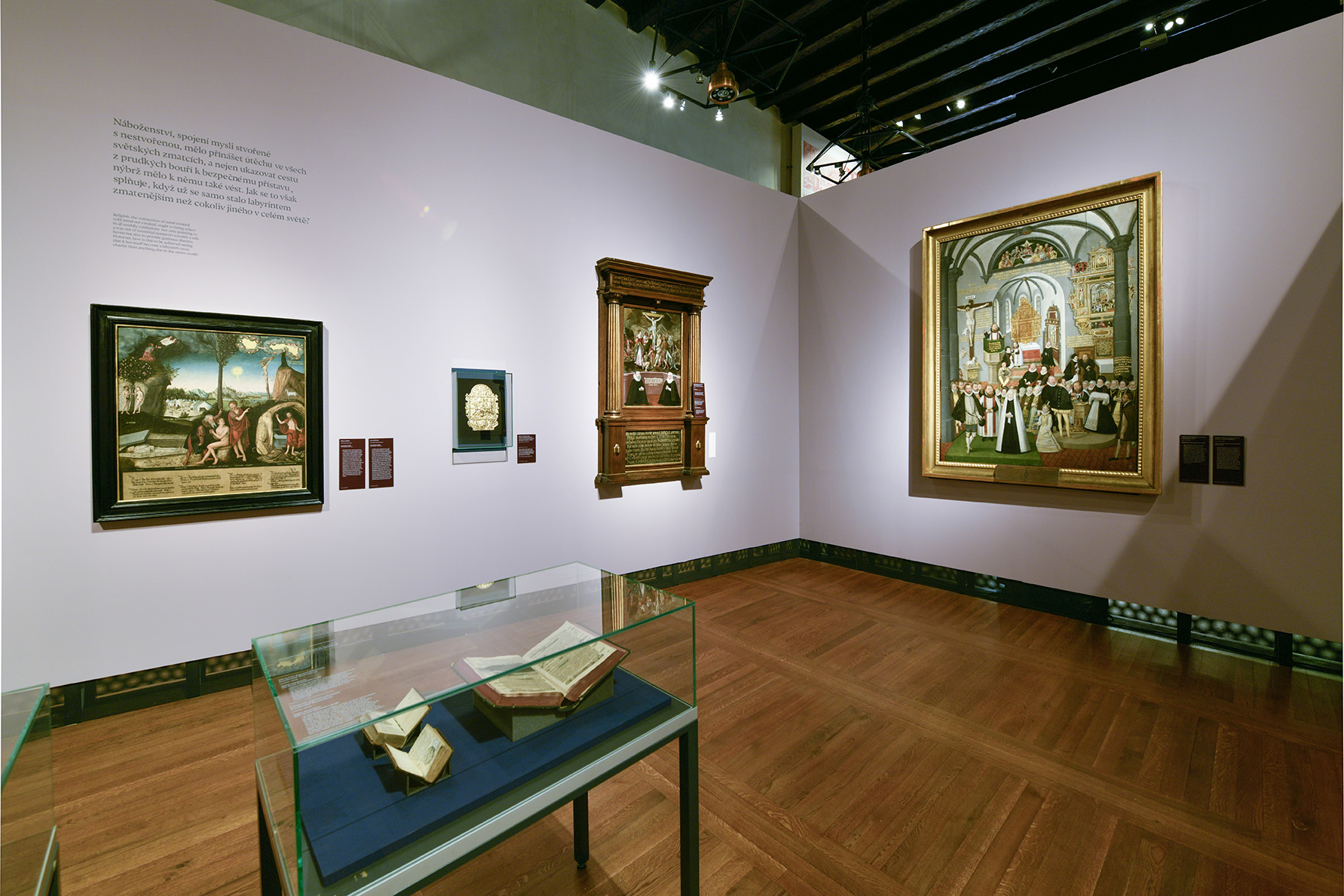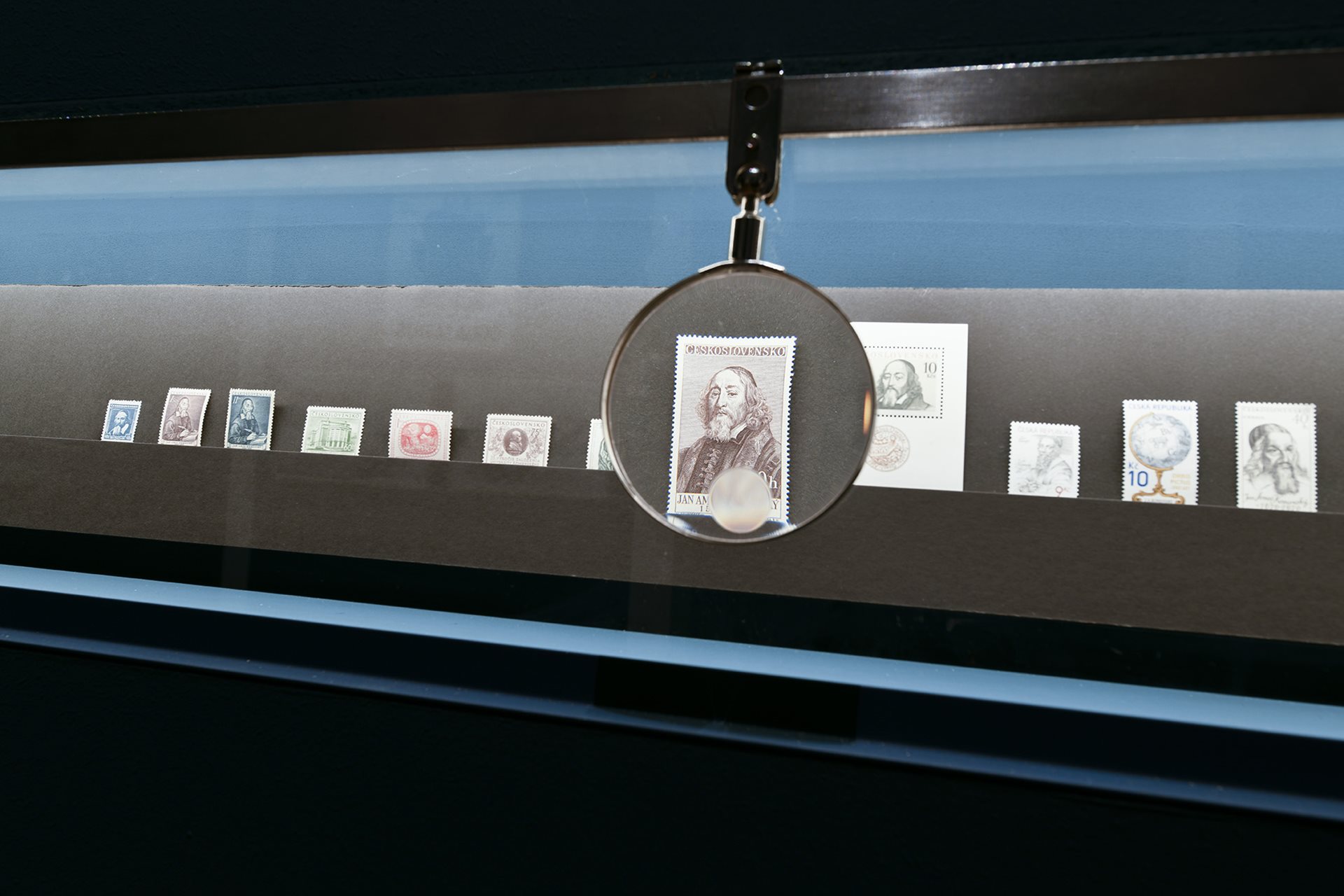The 350th anniversary of the death of J. A. Comenius was included by UNESCO in its calendar of significant events in 2020. The Czech Republic has been running a national celebration project since 2019. It includes 14 different events, from scientific conferences to an art competition for children. The culmination of these celebrations is the exhibition COMENIUS 1592—1670 – Between Insanity and Sanity, John Amos Comenius and His World. The Office of the President of the Republic, the Prague Castle Administration and the Moravian Museum participate in preparing the exhibition.
The exhibition was to open in the Prague Castle Riding Hall Gallery as of 20 December 2020, but unfortunately, it has not been possible until now to admit the public due to the prevailing epidemiological situation. That is now changing, and the exhibition will open to visitors from 3 May to 31 May daily from 10 am to 6 pm.

John Amos Comenius ranks among the greatest personalities ever who declared themselves to be of Czech descent. This he did proudly and unconditionally, although he had been forced to stay abroad the greater part of his life. This is probably also why already during his lifetime he evidently became the Czech intellectual best known internationally. Comenius has continued until this day addressing Europe by his vision of supranational institutions that would resolve conflicts between states in peaceful ways. John Amos' reasoning has always centered on an active and educated human individual who would transfigure the world for the better, in compliance with the will of God.
The exhibition covers an area of over 1,300 square meters and presents some 500 exhibits borrowed from ca. eighty public museums and private owners in the Czech Republic, the Netherlands, Germany, Poland and Austria.
Comenius is introduced in the perspective of historical tradition and, simultaneously, of the alterations and metamorphoses that the ideas and theses of his personality have undergone over the past centuries. The exhibition, divided into six sections, connects traditional topics with new research perspectives. The initial sections, Great theatrum: Images of Man and the World, A Divided Society, Europe in Wartime and in Peace, focus on historical contexts and realities, and their topic is confrontation and intolerance. The next part, The Workshop of Humanity, deliberately contrasts with the previous ones and shows Europe as an area of intellectual communication and fruitful cultural exchange. The exhibition metaphorically evokes a printing house, presents authentic equipment of early modern typography and examples of book printing and book culture at the time of Comenius, with emphasis on the Unity of Brethren printing houses in Kralice and Leszno, the German publishing centers (Frankfurt, Leipzig) and, finally, Amsterdam. The main axis of the entire exhibition is the part dealing with the Life pilgrimage of John Amos Comenius; its individual parts form diversions and digressions from which the visitor repeatedly returns to the cross-sectional theme of the chronological and factual overview of Comenius' life and work. The final section of the exhibition, Comenius as an icon, symbol and monument, is concerned with the changing reflections of Comenius' personality and work during the three and a half centuries after his death. A stand-alone section is a representative selection of paintings and sculptural portraits of John Amos Comenius. The interactive elements in the exhibition will allow the viewer a deeper insight into the issue.

For the first time outside Poland, the exhibition presents a unique collection of monuments to the exiled Unity of Brethren in Leszno, which includes mass chalices, liturgical wine cups and textiles. In 1945, these items were taken by the retreating German army to Herrnhut in Lusatia, only to return in the 1950s. Also on display is a wooden head of Christ, which is the only surviving remnant of the statue of the Crucified, which stood on Charles Bridge and was destroyed during the Swedish conquest of Prague in 1648. Also of definite interest will be the monumental painting The Last Days of John Amos Comenius from the Slavonic Epic cycle by Alfons Mucha, as much as the hitherto little-known depiction of the Battle of White Mountain from the collections of the Military Museum in Ingolstadt, attributed to the Dutch artist Peeter Snayers.
As part of the exhibition, a rich accompanying program was also prepared for the general public on another almost 500 square meters of the Riding Hall. A stand-alone element is the installation of a materialized Orbis Pictus, where the visitors will be able to test their skills. There is also film material dedicated to Comenius, and emphasis is also placed on children's work on the theme of John Amos Comenius and his work. These are drawings that emerged from the "Comenius for School Classes" competition, organized by the National Pedagogical Museum and the JAC Library.
The first major exhibition dedicated to the life and legacy of Comenius took place in 1892 in the new building of the Prague National Museum. Other events followed in the 20th century, for example in 1957, when the world commemorated the thirtieth anniversary of the publication of Opera didactica omnia, the first comprehensive edition of Comenius' pedagogical work. The present exhibition is not only the first and also the most extensive after a long time, but also the first to not only acquaint the public with the life and work of Comenius, but also to show Comenius as a fascinating and in some respects contradictory personality in the context of his time. A time marked by the first armed conflict extending over the entire continent – the Thirty Years' War, but also by an enormous rise of the human spirit. Comenius' contemporaries were Shakespeare, Descartes, Lope de Vega, Caravaggio, Rembrandt and Bernini.


John Amos Comenius ranks among the greatest personalities ever who declared themselves to be of Czech descent. This he did proudly and unconditionally, although he had been forced to stay abroad the greater part of his life. This is probably also why already during his lifetime he evidently became the Czech intellectual best known internationally. Comenius has continued until this day addressing Europe by his vision of supranational institutions that would resolve conflicts between states in peaceful ways. John Amos' reasoning has always centered on an active and educated human individual who would transfigure the world for the better, in compliance with the will of God.
The exhibition covers an area of over 1,300 square meters and presents some 500 exhibits borrowed from ca. eighty public museums and private owners in the Czech Republic, the Netherlands, Germany, Poland and Austria.
Comenius is introduced in the perspective of historical tradition and, simultaneously, of the alterations and metamorphoses that the ideas and theses of his personality have undergone over the past centuries. The exhibition, divided into six sections, connects traditional topics with new research perspectives. The initial sections, Great theatrum: Images of Man and the World, A Divided Society, Europe in Wartime and in Peace, focus on historical contexts and realities, and their topic is confrontation and intolerance. The next part, The Workshop of Humanity, deliberately contrasts with the previous ones and shows Europe as an area of intellectual communication and fruitful cultural exchange. The exhibition metaphorically evokes a printing house, presents authentic equipment of early modern typography and examples of book printing and book culture at the time of Comenius, with emphasis on the Unity of Brethren printing houses in Kralice and Leszno, the German publishing centers (Frankfurt, Leipzig) and, finally, Amsterdam. The main axis of the entire exhibition is the part dealing with the Life pilgrimage of John Amos Comenius; its individual parts form diversions and digressions from which the visitor repeatedly returns to the cross-sectional theme of the chronological and factual overview of Comenius' life and work. The final section of the exhibition, Comenius as an icon, symbol and monument, is concerned with the changing reflections of Comenius' personality and work during the three and a half centuries after his death. A stand-alone section is a representative selection of paintings and sculptural portraits of John Amos Comenius. The interactive elements in the exhibition will allow the viewer a deeper insight into the issue.

For the first time outside Poland, the exhibition presents a unique collection of monuments to the exiled Unity of Brethren in Leszno, which includes mass chalices, liturgical wine cups and textiles. In 1945, these items were taken by the retreating German army to Herrnhut in Lusatia, only to return in the 1950s. Also on display is a wooden head of Christ, which is the only surviving remnant of the statue of the Crucified, which stood on Charles Bridge and was destroyed during the Swedish conquest of Prague in 1648. Also of definite interest will be the monumental painting The Last Days of John Amos Comenius from the Slavonic Epic cycle by Alfons Mucha, as much as the hitherto little-known depiction of the Battle of White Mountain from the collections of the Military Museum in Ingolstadt, attributed to the Dutch artist Peeter Snayers.
As part of the exhibition, a rich accompanying program was also prepared for the general public on another almost 500 square meters of the Riding Hall. A stand-alone element is the installation of a materialized Orbis Pictus, where the visitors will be able to test their skills. There is also film material dedicated to Comenius, and emphasis is also placed on children's work on the theme of John Amos Comenius and his work. These are drawings that emerged from the "Comenius for School Classes" competition, organized by the National Pedagogical Museum and the JAC Library.
The first major exhibition dedicated to the life and legacy of Comenius took place in 1892 in the new building of the Prague National Museum. Other events followed in the 20th century, for example in 1957, when the world commemorated the thirtieth anniversary of the publication of Opera didactica omnia, the first comprehensive edition of Comenius' pedagogical work. The present exhibition is not only the first and also the most extensive after a long time, but also the first to not only acquaint the public with the life and work of Comenius, but also to show Comenius as a fascinating and in some respects contradictory personality in the context of his time. A time marked by the first armed conflict extending over the entire continent – the Thirty Years' War, but also by an enormous rise of the human spirit. Comenius' contemporaries were Shakespeare, Descartes, Lope de Vega, Caravaggio, Rembrandt and Bernini.

More Information
Details on the most extensive exposition so far devoted to a comeniological topic can also be found at www.comenius2020.cz andwww.hrad.cz.










-(1).jpg?width=1920&height=1204&ext=.jpg)